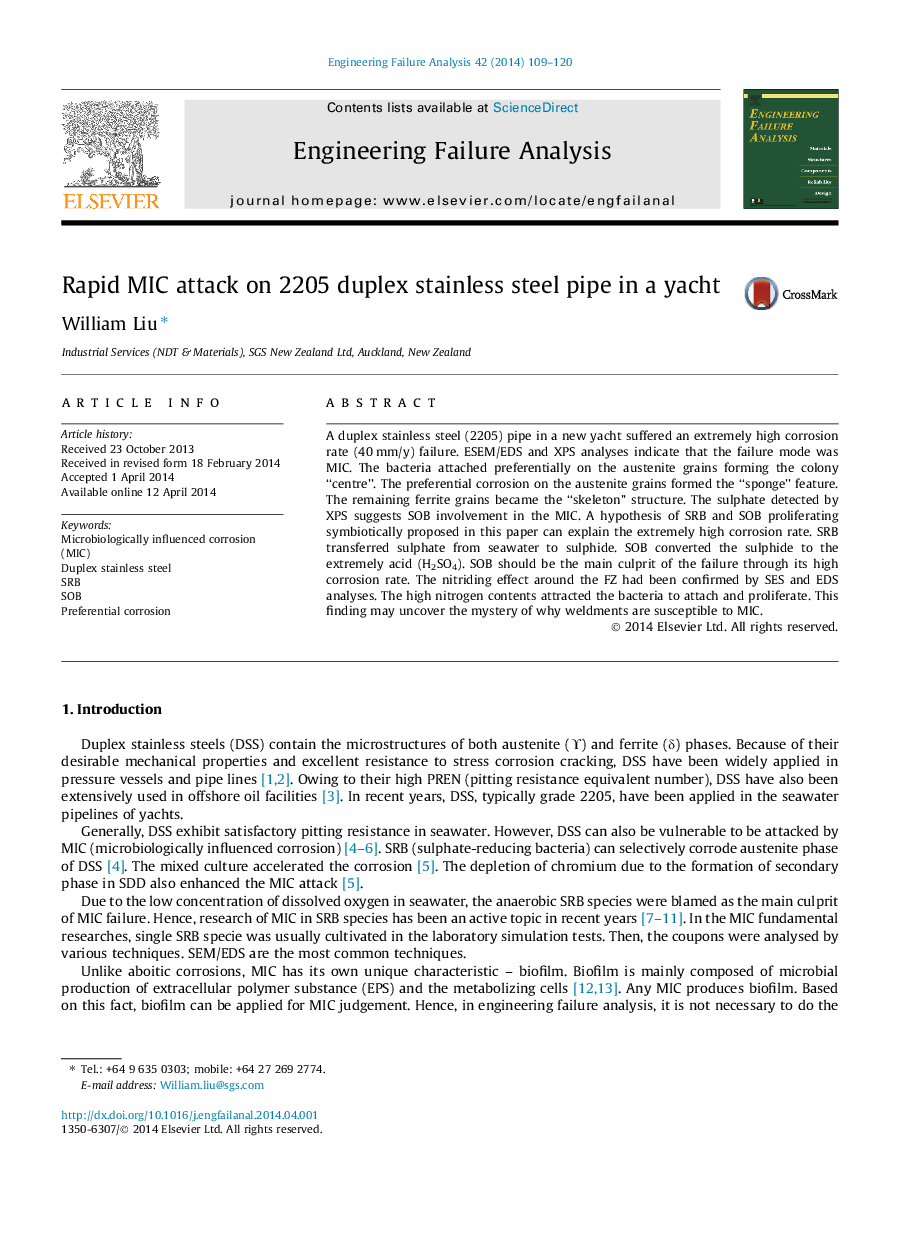| Article ID | Journal | Published Year | Pages | File Type |
|---|---|---|---|---|
| 763423 | Engineering Failure Analysis | 2014 | 12 Pages |
•An extremely high corrosion rate (40 mm/y) of MIC has been analysed.•A hypothesis of SRB and SOB proliferating symbiotically has been proposed.•The “sponge” structures due to preferential MIC on the austenite have been revealed.•The nitriding as root cause of weldments being susceptible to MIC has been discovered.
A duplex stainless steel (2205) pipe in a new yacht suffered an extremely high corrosion rate (40 mm/y) failure. ESEM/EDS and XPS analyses indicate that the failure mode was MIC. The bacteria attached preferentially on the austenite grains forming the colony “centre”. The preferential corrosion on the austenite grains formed the “sponge” feature. The remaining ferrite grains became the “skeleton” structure. The sulphate detected by XPS suggests SOB involvement in the MIC. A hypothesis of SRB and SOB proliferating symbiotically proposed in this paper can explain the extremely high corrosion rate. SRB transferred sulphate from seawater to sulphide. SOB converted the sulphide to the extremely acid (H2SO4). SOB should be the main culprit of the failure through its high corrosion rate. The nitriding effect around the FZ had been confirmed by SES and EDS analyses. The high nitrogen contents attracted the bacteria to attach and proliferate. This finding may uncover the mystery of why weldments are susceptible to MIC.
